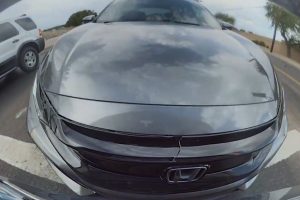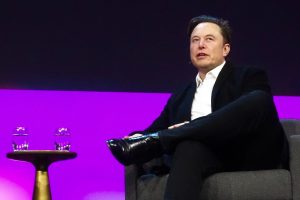For a durability test, a Tesla owner recently acquired a rare “V1” sample of Elon Musk’s Boring Company brick. Dan Markham was able to get his hands on two Boring Bricks from YouTube channel What’s Inside and had some fun conducting a drop test to equate its durability with possible rivals in the market.
Thanks to a Boring Co. employee, Markham managed to get a hold of two Boring Bricks from the first batch of 500 “V1” pieces. Since 2018, the CEO of Tesla and SpaceX has spoken about inexpensive bricks made of tunneling rock, and he called them Boring Bricks in true Elon Musk fashion. The Boring Bricks would cost 10¢ a piece, significantly lower than bricks on the market, Musk said.
Besides the Boring Brick’s material and affordable price, another interesting feature about it would be its durability. When the Boring Brick was introduced by Musk, he stressed its strength. Musk said in a tweet, “Boring Bricks are rated for California seismic loads, so super strong, but bored in the middle, like an aircraft wing spar, so not heavy.”
Markham decided to put Musk’s words to the test and compared four conventional alternatives with his Boring Bricks. He purchased an average red clay brick for 53¢, a used clay brick for 58¢, a steel reinforced cinder block brick for 71¢ and a regular cinder block brick for 43¢.
Markham dropped each brick from various heights for his durability test before they split into bits. He lowered them from chest-level for the first test and the Boring Brick passed with no problem. The 71¢ cinder block brick strengthened with steel passed, and the 53¢ red clay brick with a small crack in the corner survived the first test as well.
Unfortunately, after both broke in two, the 58¢ clay brick and 43¢ cinder block were eliminated in the first round.
Markem went up a flight of stairs for the second test and lowered the bricks from about 10 feet above the ground. With the exception of a slight crack on the corner of the red clay brick and a tiny one on the Boring Brick, the remaining bricks all reached the second round relatively unscathed.
The Boring Brick once again proved its toughness in the third test, surviving a fall with only another small chip from about 12-14 feet. By this time, the only other brick that survived the durability test was the steel-reinforced cinder block brick, which cost over 7 times the Boring Brick.
The What’s Inside test was entertaining and illustrated the resilience of the Boring Brick. The toughness of bricks, however, is typically measured by compression and there are other variables to consider when determining the consistency.
Nevertheless, the video from Markham managed to prove that the Boring Brick is a viable product and may be Musk’s other potentially innovative concept. At its price point, Boring Bricks could change the construction and housing market. For his Boring Bricks, Markham didn’t mind paying a little extra because they were commemorative items. For each Boring Block, he paid $200 and gave a friend one of them.
In the past, Elon described Boring Bricks as “lifesize LEGO-like interlocking bricks.” It seems that Musk is sticking to his strategy on the basis of the bricks that Markham obtained. In the center, with “The Boring Company” inscribed in the center, The Boring Brick has two holes reminiscent of Lego bricks. These should allow for easy buildouts for construction projects, as the bricks are optimized to be laid with relatively little effort.
Watch the Boring Brick Durability Test by Dan Markham in the video here.
Want to buy a Tesla Model 3, Model Y, Model S, or Model X? Feel free to use my referral code to get some free Supercharging miles with your purchase: http://ts.la/guanyu3423
You can also get a $100 discount on Tesla Solar with that code. Let’s help accelerate the advent of a sustainable future.





